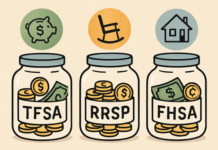Customer onboarding kills sales. Studies show that 70% of potential customers abandon purchases during lengthy registration processes. Small businesses lose money every day because they do not simplify customer onboarding, making it too hard for people to buy.
The solution isn’t removing security entirely. Smart businesses simplify customer onboarding while maintaining protection against fraud and chargebacks.
Implement One-Click Checkout Systems
One-click checkout reduces friction dramatically. Amazon perfected this model, but small businesses can use similar technology through payment processors like Stripe, PayPal, and Square.
Set up saved payment methods for returning customers. Store encrypted card data securely so customers only need to click once to complete purchases. This works especially well for repeat buyers and subscription services.
Digital wallets make one-click even easier. Apple Pay, Google Pay, and Samsung Pay store customer information securely. When customers use these services, they skip entering card details entirely. Processing happens instantly.
To simplify customer onboarding, configure your checkout to remember customer preferences. Save shipping addresses, payment methods, and product preferences. Next time customers visit, they see their information pre-filled.
Learn from the Gaming and Entertainment Industries
Online casinos and gaming platforms excel at fast onboarding. They need customers to play quickly while maintaining regulatory compliance and fraud prevention.
As this no-registration-needed approach shows, customers can start playing immediately while platforms handle compliance behind the scenes. Players deposit funds and begin gaming instantly through tokenization and temporary accounts.
This model works through unique identifiers linked to payment methods. Full verification happens later for withdrawals or continued play.
Adapt this concept for other industries. Let customers start using services immediately while verification runs in the background. Complete onboarding progressively based on usage levels.
Use Guest Checkout Options
Guest checkout eliminates registration requirements, which in turn will simplify customer onboarding. Customers enter basic information – name, email, shipping address, payment details, without creating accounts. They complete purchases immediately, and you don’t have to worry about cart abandonment.
This approach works best for businesses with infrequent purchasers. If customers buy once or twice per year, forcing account creation creates unnecessary barriers.
Offer account creation after purchase completion. Show the benefits – order tracking, faster future checkouts, exclusive offers. Some customers will sign up voluntarily when they see value.
Track guest customers through email addresses. You can still send receipts, shipping updates, and marketing messages without forced registration.
Deploy Digital ID Verification Tools
Digital identity verification balances speed with security. Services like Jumio, Onfido, and Trulioo verify customers instantly using document scanning and facial recognition.
Customers take photos of government IDs with their smartphones. AI compares the document to its face in real-time. Verification completes in under 30 seconds.
This technology works well for age-restricted products, financial services, and high-value purchases. Customers appreciate fast verification compared to traditional methods requiring document uploads and manual review.
To simplify customer onboarding, use risk-based verification. Low-value purchases might only need email confirmation. Higher amounts trigger additional checks.
Handle High-Risk Transactions Smartly
Some businesses face higher fraud risks, such as travel, digital goods, and luxury items. These industries can still simplify onboarding with proper safeguards.
Implement device fingerprinting: track customer devices, locations, and behavior patterns. Flag suspicious activity without adding friction for legitimate customers. Tools like FraudLabs Pro and MaxMind provide these services.
Use velocity checking. Monitor purchase frequency, amounts, and patterns. Block obvious fraud attempts while allowing normal customer behavior.
Enable two-factor authentication for high-value purchases. Send SMS codes or use authenticator apps for additional verification. This adds security without complicating every transaction.
Optimize Mobile Onboarding
Mobile users abandon complex forms faster than desktop users. Optimize mobile onboarding specifically for touchscreen interactions and shorter attention spans.
To simplify customer onboarding, use autofill functionality. Mobile browsers can populate forms automatically using saved information. Enable this feature so customers don’t type on small keyboards.
Minimize required fields. Ask only for essential information during initial signup. Use single-column layouts that work well on phone screens.
Accept mobile payments natively. Integrate with mobile wallets and carrier billing. Let customers charge purchases to phone bills or use biometric authentication.
Create Flexible Account Types
Offer different account levels based on customer needs. Not everyone wants the same level of engagement with your business.
Basic accounts need minimal information—email and password. These work for customers who buy occasionally and don’t need advanced features.
Premium accounts include additional benefits – faster shipping, exclusive products, and a detailed order history. Require more information but provide clear value in return.
Business accounts need company details and may require approval processes. Justify additional requirements with features like bulk pricing and dedicated support.
Security Without Friction
Modern fraud prevention works invisibly. Machine learning algorithms analyze hundreds of data points: device characteristics, browsing patterns, purchase behavior – without requiring customer input.
Track how customers type and move their mouse around your site. Everyone has different patterns – how fast they type, where they click, how they scroll. Fraudsters can’t copy these behaviors easily.
To simplify customer onboarding, check where customers are located. Compare their location to their billing address and where they’ve shopped before. Block purchases from strange locations while letting normal customers buy from anywhere.
Partner with payment processors that handle fraud detection automatically. Services like Stripe Radar and PayPal’s fraud protection run advanced algorithms without adding checkout steps.
The goal is invisible security that protects your business while keeping legitimate customers happy. When fraud prevention works properly, customers never know it’s running.
Find a Home-Based Business to Start-Up >>> Hundreds of Business Listings.














































